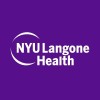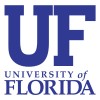
Effect of Increasing Motor Cortex Inhibition on Task Specific Dystonia
DystoniaDystonia is a disease where muscles in the affected body part are abnormally active. This may result in abnormal postures. The underlying mechanisms are not known. One proposed mechanism is located in the motor area of the brain that controls the coordination of muscles, called the motor cortex. It is well known that the motor area of one hemisphere of the brain (motor cortex) controls the movement of the opposite side of the body. When people perform tasks such as picking up an object or writing there are mechanisms in motor cortex that focus the level of activity so that they can do these tasks with a high level of precision. Focusing activity in motor cortex seems to be disturbed in people with dystonia. Transcranial magnetic stimulation (TMS) is a device that allows the non-invasive stimulation of the brain. When applied to the motor cortex it can upregulate or down regulate its activity. In the present study the investigators will conduct experiments on subjects with task specific focal hand dystonia (such as writers cramp) using TMS to decrease unwanted motor activity. The investigators will assess the effects of this intervention using objective, subjective and kinematic measures. This is a pilot study and will require further research to assess the long-term effects of repetitive TMS on task-specific focal hand dystonia.

Agency in Dystonia
DystoniaPrimaryIn this study, using computerized cognitive assessments combined with multi-modal neuroimaging approach investigators aim to address three specific questions on patients with cervical and myoclonus dystonia: (i) investigate various aspects of the sense of agency and relationship to the severity of dystonia symptoms, (ii) characterize the possible link between abnormalities of movement perception and alteration of sense of agency in dystonia, (iii) (identify the neuronal underpinnings of the defective sense of agency in dystonia.

Effect of Vocal Exercise After Botulinum Toxin Injection for Spasmodic Dysphonia
Spasmodic DysphoniaDystoniaStudies have suggested that voluntary muscle exercise in the hand and face after botulinum toxin injection may enhance the clinical effects of the toxin. Exercise may speed up the absorption of the toxin by the nerves and enhance the clinical response. This study will explore the effect of exercise on botulinum toxin injections for spasmodic dysphonia (SD).

Pilot Efficacy Study of T2000 in Myoclonus Dystonia
MyoclonusThis pilot study will evaluate the safety and efficacy of once daily T2000 when used to treat patients with Myoclonus Dystonia over a 12 week period.

The Development of a System for Measurement of Tremor
Essential TremorDystoniaThis study aims to develop a way of objectively measuring the neurological disorders, Essential Tremor (ET) and Dystonia, and whether it is possible to quantify ET and dystonia using a measurement system in a virtual reality (VR) environment.

Neuromuscular Electrical Stimulation for Jaw-closing Dystonia
Muscle Dystonia6 patients with jaw-closing dystonia will be treated with neuromuscular electrical stimulation over 8 weeks. The distance the mouth can be opened voluntarily and the oro-mandibular dystonia questionnaire (OMDQ-25) will be employed to determine whether there is any objective change in jaw opening or evidence of functional improvement.

Sensory Gating Measured With Microelectrode Recording (MER) During Deep Brain Stimulation (DBS)...
Parkinson's DiseaseEssential Tremor2 moreDeep brain stimulation (DBS) is an FDA approved, and widely used method for treating the motor symptoms of Parkinson's disease (PD), Essential Tremor (ET), Dystonia and Obsessive Compulsive disorder (OCD). Over 100,000 patients worldwide have now been implanted with DBS devices. Current approved methods to locate the DBS target regions in the brain use a combination of stereotactic imaging techniques and measurements of the electrical activity of brain cells. As part of the standard clinical technique, electrical data are collected from individual nerve cells. The target brain region emits unique electrical signals. At certain brain locations, during DBS surgery, additional electrical data that are generated in response to sound will be collected. Regions of the brain that have a decreased response to repeated sound (auditory gating) may be important DBS targets for improving thinking. The aims are (i) during DBS surgery, in addition to EEG, use microelectrodes in the brain to find brain regions, along the normal path to the DBS target, where auditory gating occurs and then (ii) determine if stimulation of the identified region(s) alters auditory gating measured by EEG. Also an additional aim (iii) is to measure electrical activity at the scalp with EEG to characterize auditory gating in patients before and after DBS surgery and also a healthy control population.

Effects of Botulinum Toxin on Muscle and Brain Activity
Cervical DystoniaPrimaryThis study will look into the effects of Botulinum Toxin in patients with primary cervical dystonia. The effects will be determined by neck muscle activity measurements and brain function activity measurements. The goal of the study is to try to identify markers of the effects of Botulinum toxin.

The Effects of Vibrotactile Stimulation in Patients With Movement Disorders
Parkinson DiseaseEssential Tremor1 moreVibration applied to the skin has been anecdotally reported to potentially improve motor control in patients with movement disorders including Parkinson's disease, however few devices have been studied formally. In this study, the investigators will test the effect of skin surface vibration applied non-invasively to patients with movement disorders to determine if there are any beneficial effects on common tasks of motor control and/or abnormal motor symptoms in patients with Parkinson's disease (PD), essential tremor (ET), and dystonia.

rTMS and Retraining in Focal Hand Dystonia
Focal DystoniaThis study is exploring a new experimental procedure in dystonia called repetitive transcranial magnetic brain stimulation (TMS) combined with rehabilitation. The purpose of the study is to determine whether repetitive TMS is effective as a treatment to reduce symptoms in dystonia as demonstrated by improved motor performance.
